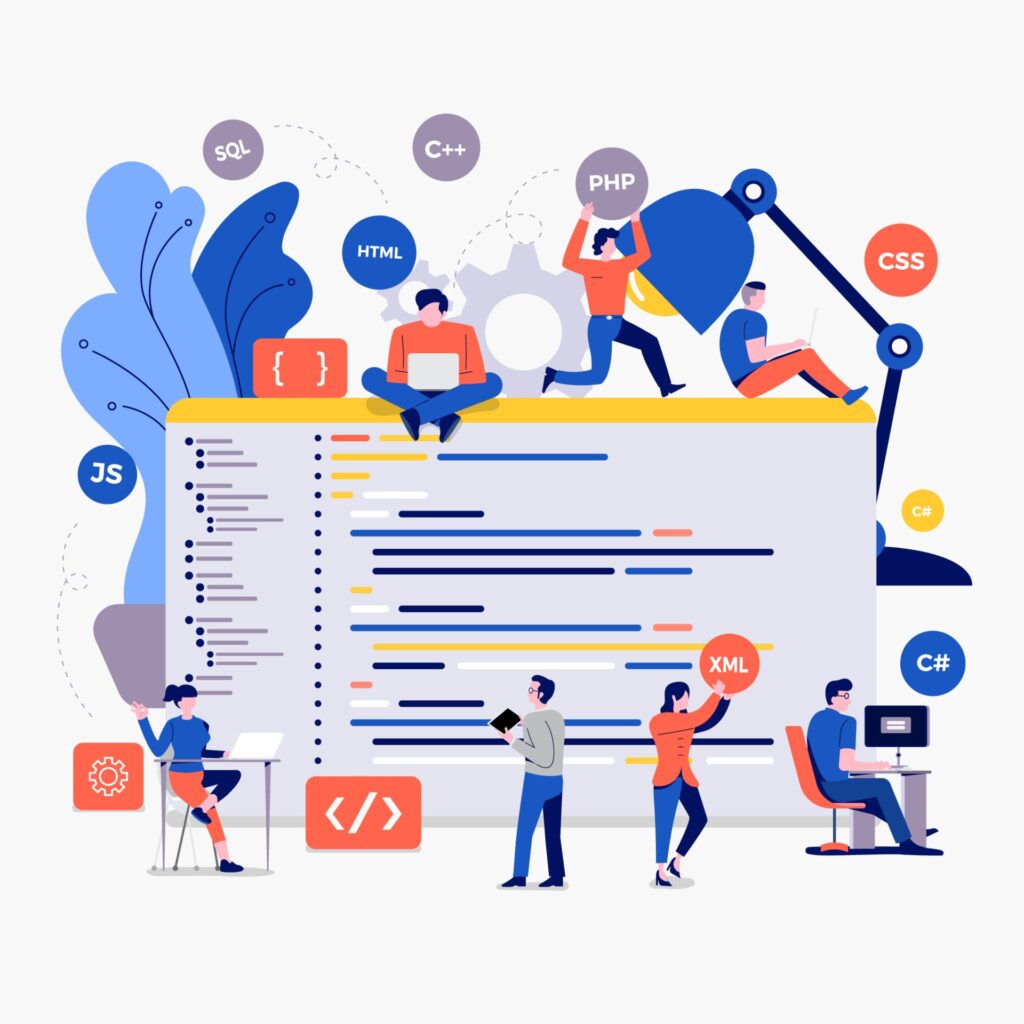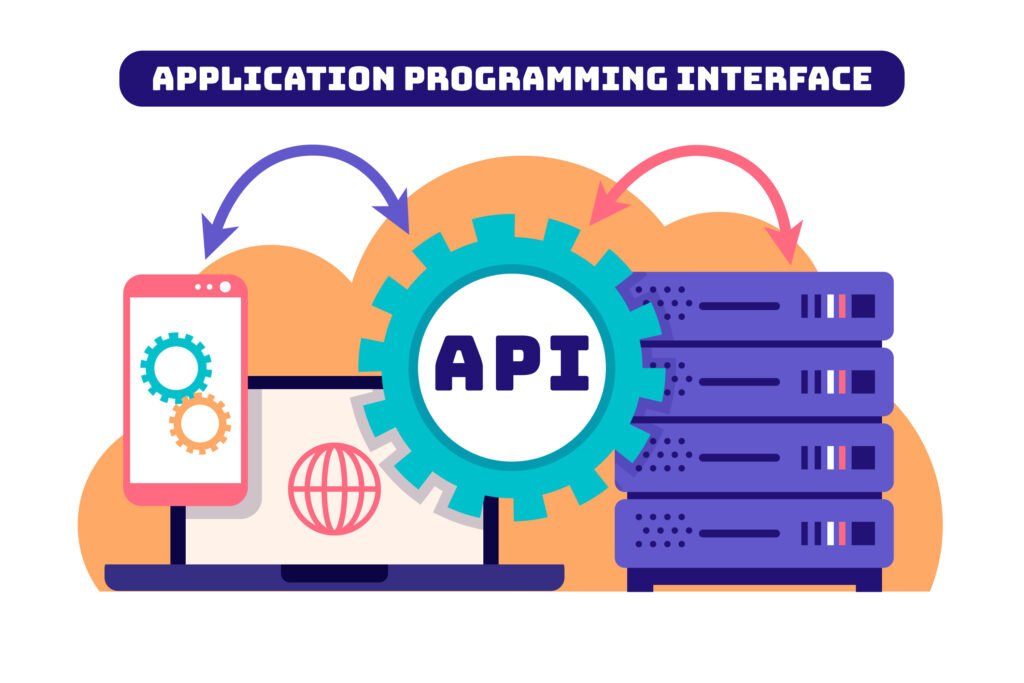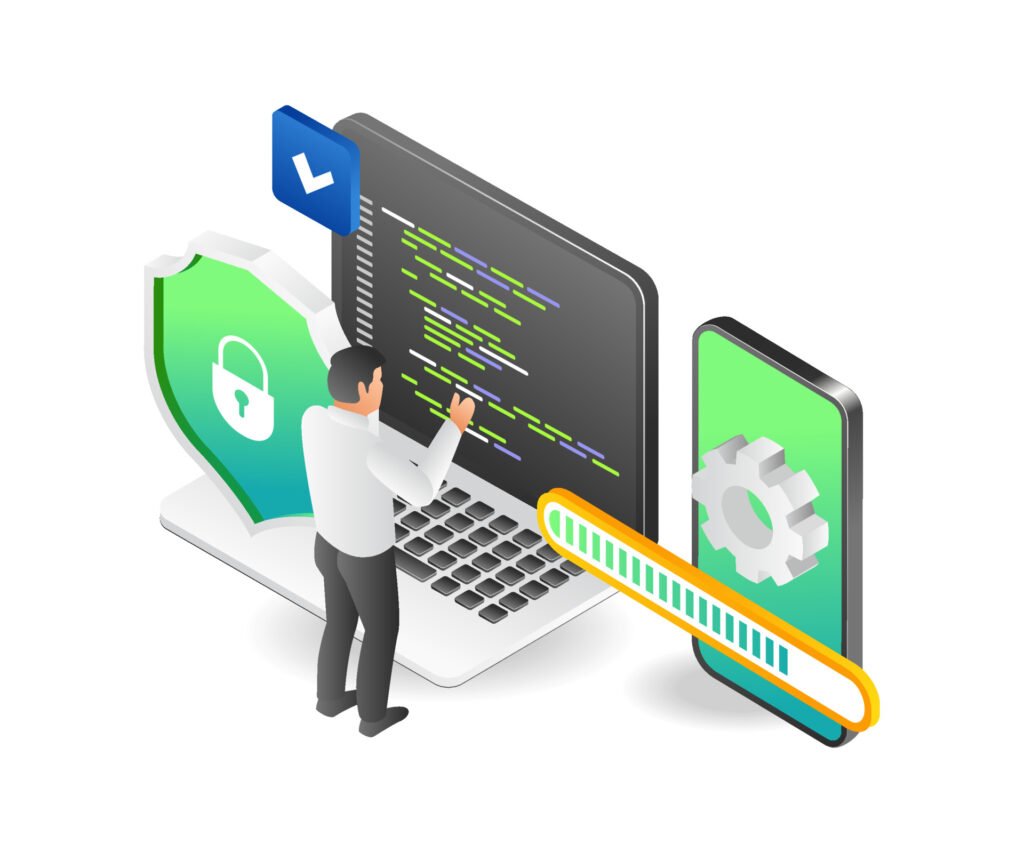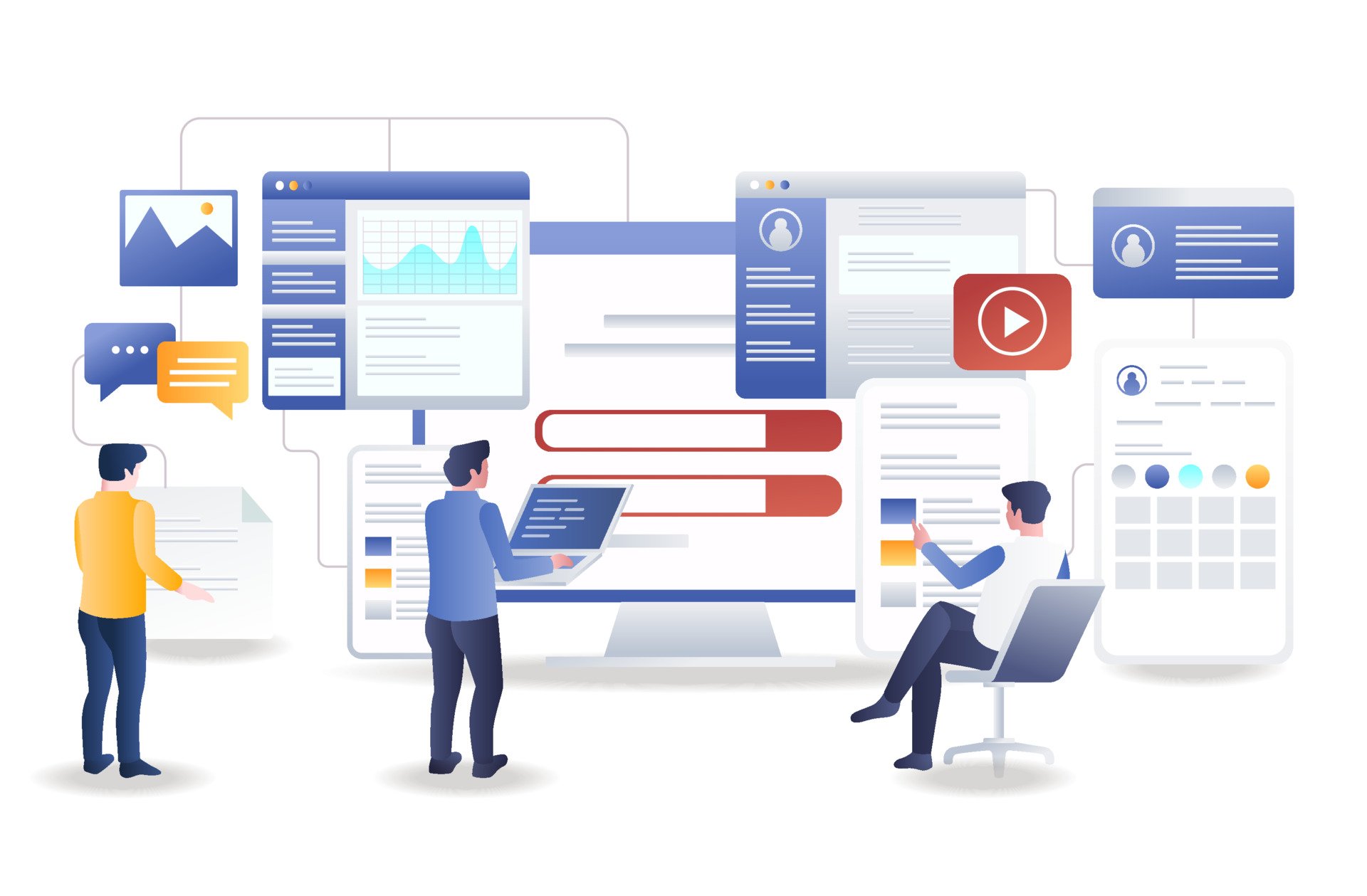What is an API?
API stands for “Application Programming Interface“. But what is an API? It is a set of protocols, tools, and standards for building software applications. An API specifies how software components should interact and communicate with each other, defining the kinds of requests that can be made, how to make them, the data formats that should be used, and the rules for handling errors.
APIs are used to enable software applications to exchange data and functionality with each other, even if they were developed by different organizations or on different platforms. For example, when you use an app on your phone to check the weather, the app is making a request to a weather API to get the current weather data.
APIs can be internal to an organization or made available to third-party developers as public APIs. Public APIs are commonly used by developers to build integrations, extensions, or other software that relies on the functionality provided by the API. If you still don’t understand exactly what is an API and want to learn more, below we’ll explain the types of APIs, how they work, what the benefits are, and more.

What are the types of APIs
There are several types of APIs, each serving a different purpose. If you want to learn more about what is an API, here are some of the more common types of APIs:
REST APIs: Representational State Transfer (REST) APIs are a popular type of web API that use HTTP requests to interact with data. They typically use JSON or XML as the data format and rely on standard HTTP methods like GET, POST, PUT, and DELETE to perform CRUD (Create, Read, Update, Delete) operations on resources.
SOAP APIs: Simple Object Access Protocol (SOAP) APIs are another type of web API that use XML to transfer data. They are often used in enterprise applications and rely on a messaging protocol to communicate between applications.
GraphQL APIs: GraphQL APIs are a newer type of API that allow clients to request only the data they need. Instead of returning a fixed set of data, GraphQL APIs allow clients to define their own queries and retrieve only the relevant data.
Open APIs: Open APIs, also known as public APIs, are available to developers and the public to access and use. They are often provided by companies or organizations to encourage third-party developers to build integrations or applications that rely on their data or services.
Internal APIs: Internal APIs, also known as private APIs, are used within a company or organization to connect different internal systems or services. They are not meant to be used by external developers or the public.
Partner APIs: Partner APIs are used by companies to share data or services with trusted partners or vendors.
Composite APIs: Composite APIs are a type of API that combines data or functionality from multiple APIs into a single API. This allows developers to access multiple resources with a single API call.
These are just some of the most common types of APIs, and there are many other types of APIs that serve different purposes.

How do APIs work?
APIs work by providing a set of defined protocols and tools that allow different software applications to communicate with each other. Now that you know what is an API, here’s a high-level overview of how APIs work:
An application sends a request to an API: The application sends a request to an API using a defined protocol, such as HTTP or HTTPS. The request includes specific parameters that are necessary for the API to process the request.
The API receives the request: The API receives the request and validates it to ensure that it includes all the necessary information for the API to process it.
The API processes the request: The API processes the request according to its defined protocols, which may include accessing data from a database, running calculations, or performing other tasks.
The API sends a response: Once the API has processed the request, it sends a response back to the application that made the request. The response typically includes the requested data or an error message if the request could not be fulfilled.
The application processes the response: The application processes the response from the API and takes appropriate action based on the data or error message received.
This process can be repeated many times, with the application sending multiple requests to the API and receiving multiple responses over time. APIs allow applications to interact with each other in a standardized and predictable way, which can make it easier to build complex software systems that rely on multiple components working together.
Bonus: We hope you’re not bored reading about what is an API, but if you want to take a break, here’s an article about the benefits of small business software automation and how it can help you grow your business.
Innovating with APIs
Now that is clear what is an API, you should know that APIs have become a critical component for innovation in software development. Here are a few ways in which APIs can be used to innovate:
Building integrations: APIs make it easy to integrate different software systems or services, allowing developers to create innovative applications that rely on the data or functionality provided by different APIs. For example, a ride-sharing app can integrate with a mapping API to provide real-time traffic information and navigation to drivers and passengers.
Developing new products: APIs allow developers to access data and services from other companies or organizations, which can be used to create new products or features that were previously impossible or too costly to develop. For example, a financial app can integrate with a banking API to provide users with real-time account information and transaction history.
Improving user experiences: APIs can be used to improve user experiences by providing personalized content or functionality based on user data. For example, a music streaming app can use an API to recommend songs or playlists based on a user’s listening history and preferences.
Facilitating collaboration: APIs can be used to facilitate collaboration between different teams or departments within an organization by allowing them to share data or services. For example, a marketing team can use an API to access customer data from a sales team to create targeted advertising campaigns.
Creating new business models: APIs can enable companies to create new business models by providing access to their data or services. For example, a travel company can provide access to its booking API to allow third-party developers to create custom travel experiences or packages for their customers.
Innovating with APIs requires a creative mindset and an understanding of how different APIs can be combined to create innovative solutions. As more companies and organizations continue to provide access to their data and services through APIs, the possibilities for innovation are endless.

What are some advantages of APIs?
APIs provide many benefits for software development and innovation. Now that you know what is an API, here are some of the key benefits of using APIs:
Improved efficiency: APIs can make it easier and more efficient to develop software applications by providing pre-built functionality and services that can be easily integrated into new applications, instead of building these functionalities from scratch.
Faster time to market: APIs can help to reduce development time and accelerate the time-to-market for new applications, by allowing developers to quickly access and integrate data or services from external sources.
Cost savings: APIs can reduce development costs by providing access to external data and services, which can be much more cost-effective than building these services in-house.
Enhanced functionality: APIs can provide access to specialized services or data that may be difficult or impossible to create in-house, enhancing the functionality and capabilities of software applications.
Scalability: APIs can support the scaling of software applications by allowing access to external resources that can handle large volumes of data or traffic.
Flexibility: APIs can provide flexibility in the development process by allowing developers to integrate different APIs and create custom solutions that fit specific needs.
Innovation: APIs can foster innovation by enabling the development of new products, services, and business models that rely on the functionality and data provided by different APIs.
If you understand what is an API, you know that APIs provide a powerful tool for developers and organizations to create innovative software applications and services that can provide real value to end users.

How to create an API?
Now that you know what is an API, the next question would be how do you create one and what are the steps involved.
Define your API’s purpose and functionality: Before creating an API, you need to determine what problem it solves or what service it provides. Identify the data and services that your API will expose and define how they will be accessed and used.
Choose a development framework: Choose a development framework that suits your API’s requirements. Popular frameworks for creating APIs include Node.js, Ruby on Rails, Django, and Flask.
Design your API: Define the API’s structure, endpoints, data types, and data formats. You may want to use an API design tool such as Swagger or API Blueprint to help with this process.
Develop your API: Use your chosen development framework to develop your API. This involves writing code to implement your API’s endpoints, data models, and business logic.
Test your API: Test your API to ensure that it functions as intended and returns the expected results. Use automated testing tools to check for errors and bugs.
Document your API: Document your API’s endpoints, parameters, data types, and error codes. Provide sample requests and responses to help developers understand how to use your API.
Publish your API: Publish your API on a public or private API gateway. A gateway is a layer between the API and the client that handles authentication, authorization, rate limiting, and other security and performance-related tasks.
Monitor and maintain your API: Monitor your API’s usage, performance, and security. Update your API as necessary to fix bugs, add new features, and address security vulnerabilities.
Creating an API can be a complex process, but following these steps can help ensure that your API is well-designed, functional, and secure. It’s also important to stay up-to-date with best practices and standards for API development, such as RESTful design principles and OAuth2 authentication.

Bonus: We hope you’re not bored with the topic of what is an API, but if you want to take a break, here’s an article on how to create an MVP, and we hope it will help you.
API Examples
Now that it’s clear what is an API, here are some common examples of APIs you may encounter:
Social media APIs: Social media platforms like Twitter, Facebook, and Instagram provide APIs that allow developers to access their data and integrate social media features into their applications. For example, a developer could use the Twitter API to display tweets on their website.
Payment gateway APIs: Payment gateway APIs like PayPal, Stripe, and Braintree allow developers to integrate payment processing functionality into their applications. This can include accepting payments, managing subscriptions, and processing refunds.
Mapping and location APIs: Mapping and location APIs like Google Maps and Mapbox provide developers with access to geolocation data, mapping tools, and routing functionality. This can be used to build custom mapping applications or integrate location-based services into existing applications.
Weather APIs: Weather APIs like OpenWeatherMap and Weather Underground provide developers with access to real-time and forecasted weather data. This data can be used to build weather applications, or to provide contextual weather information within other applications.
Travel APIs: Travel APIs like Expedia and Kayak provide developers with access to travel data, including flights, hotels, and rental cars. This data can be used to build custom travel applications, or to provide travel booking functionality within other applications.
eCommerce APIs: eCommerce APIs like Shopify and WooCommerce provide developers with access to product data, order management tools, and payment processing functionality. This data can be used to build custom eCommerce applications or to integrate eCommerce functionality into existing applications.
These are just a few examples of the many APIs available today. APIs are used in a wide variety of industries and applications, and are a powerful tool for building innovative software applications.

Risks of api
While we have learned what is an API and the benefits it provides, we should know that APIs can also present some risks that developers and organizations should be aware of. Here are some common risks associated with APIs:
Security vulnerabilities: APIs can expose sensitive data and functionality to external parties, making them vulnerable to attacks such as injection attacks, authentication bypass, and denial-of-service (DoS) attacks.
Compliance and regulatory risks: Depending on the industry and data being exchanged, APIs may need to comply with industry regulations, such as HIPAA for healthcare data or PCI DSS for payment card information. Non-compliance can lead to legal and financial risks.
API misuse and abuse: APIs can be misused or abused by external parties, leading to data breaches, system failures, and other disruptions. For example, an API may be used to flood a system with requests, causing it to crash.
Reliance on third-party APIs: Organizations may rely on third-party APIs that are out of their control, and any issues or outages with those APIs can affect the functionality and performance of their own applications.
Lack of API versioning and backward compatibility: Changes to an API’s functionality or structure can break compatibility with existing clients, leading to disruptions and negative impacts on user experience.
To mitigate these risks, developers and organizations should implement security best practices, regularly monitor and test their APIs, and establish contingency plans for disruptions or outages. It is also important to carefully select and vet third-party APIs, and to plan for versioning and backward compatibility to ensure smooth transitions as APIs evolve over time.
We hope this article has clarified what is an API and how it can help you grow your business. If you have additional questions, do not hesitate to contact us. If you need us to help you with the development of a software service and you want to estimate the price in advance, the software development price calculator is a click away.





